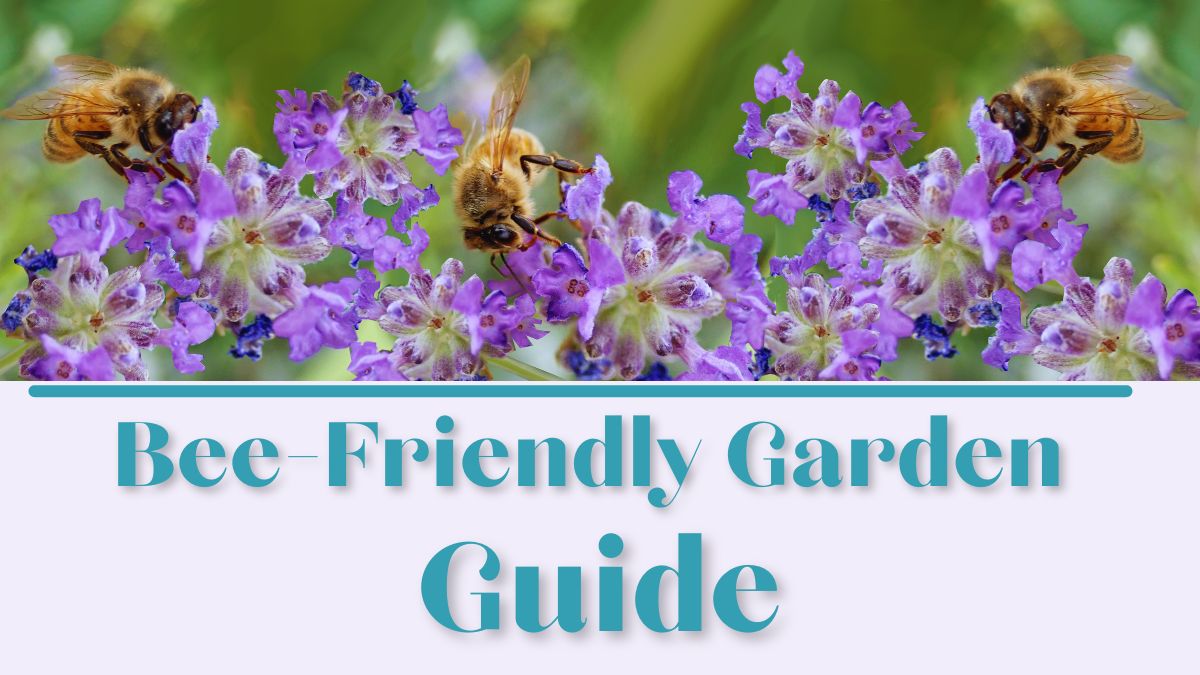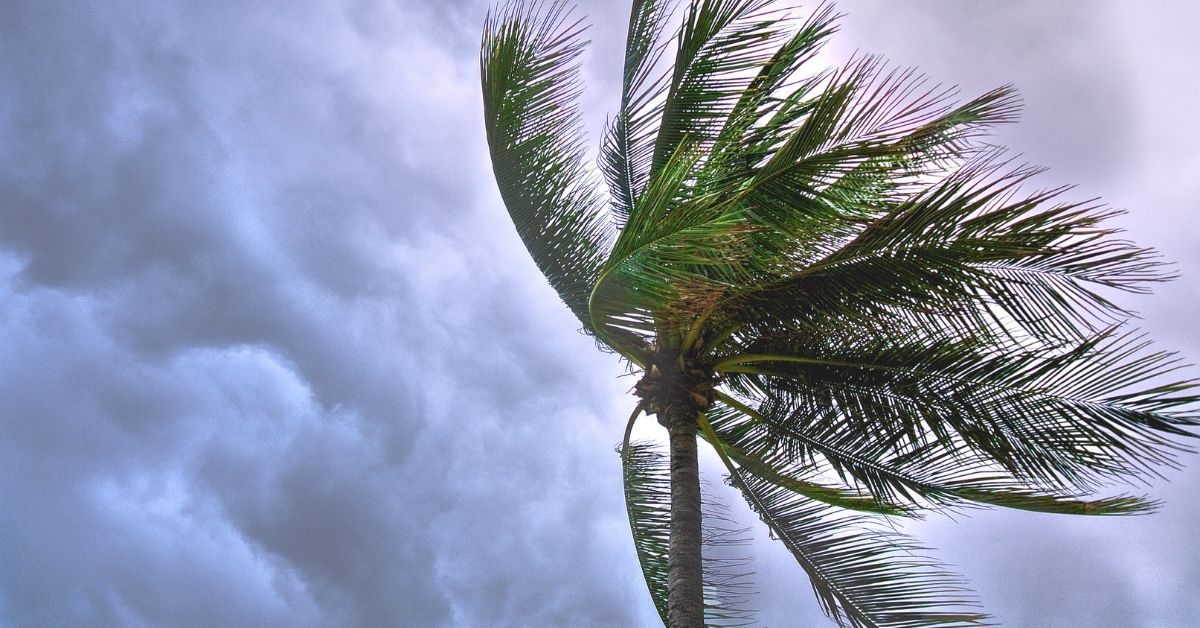Did you know that bees are responsible for pollinating about one-third of the world’s food crops and 90% of the world’s wildflowers? Without bees, we would lose many fruits, vegetables, nuts, and seeds that we depend on for our nutrition and health. Bees are also essential for maintaining the diversity and beauty of nature.
Unfortunately, bees are facing a serious decline due to habitat loss, climate change, pesticides, diseases, and parasites. As gardeners, we have a responsibility and an opportunity to help these amazing creatures by creating bee-friendly spaces in our own backyards.
How to Attract Bees to Your Garden
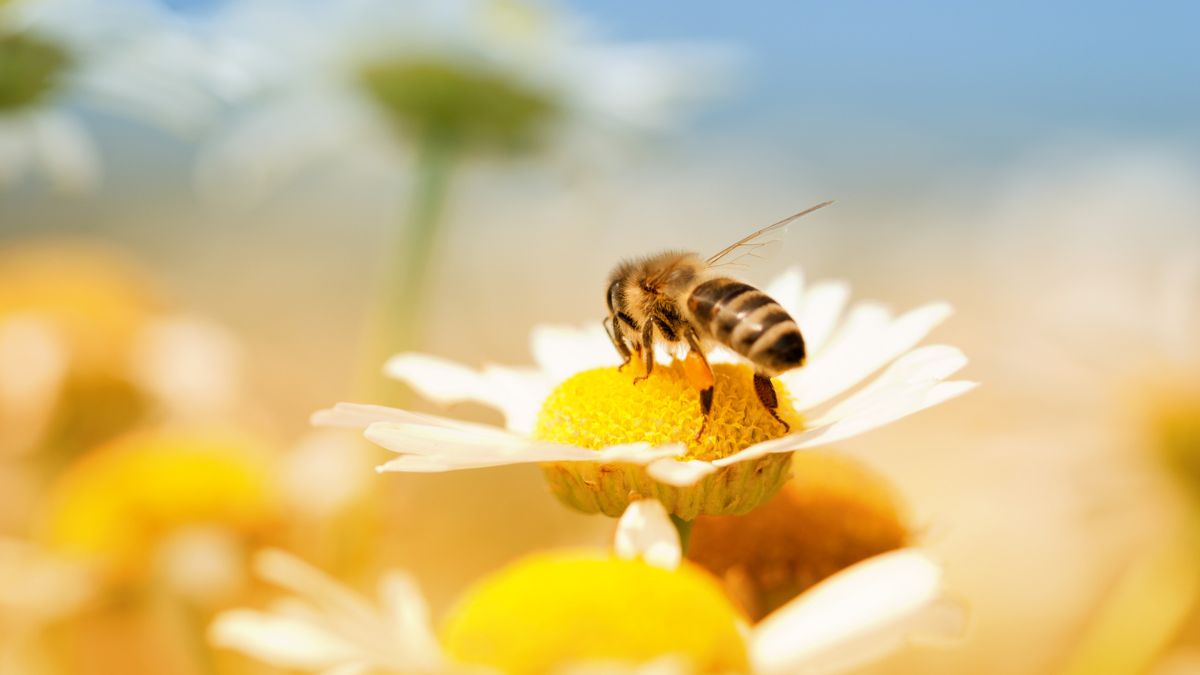
In this article, I will show you how to attract bees to your garden with some simple and effective tips that will benefit not only the bees but also your plants and the environment. You don’t need a large or fancy garden to make a difference. All you need is some love and care for these buzzing beauties. Let’s get started!
1. Growing a variety of flowers for a bee friendly garden
One of the best ways to attract bees to your garden is to grow a variety of flowers that attract bees that are rich in pollen and nectar. Pollen and nectar are the main food sources for bees, and they use them to feed themselves and their young. Pollen is a fine, sticky powder that contains the male genetic material of flowering plants. Nectar is a sweet liquid that flowers produce to lure bees and other pollinators.
When bees visit flowers, they collect pollen on their bodies and transfer it from one flower to another, helping them to reproduce. Nectar provides bees with energy and helps them to make honey. Different types of flowers offer different amounts and qualities of pollen and nectar, and bees have preferences for certain colors, shapes, and scents.
To attract a diversity of bees to your garden, you should grow flowers that bloom at different times of the year, from early spring to late autumn. You should also choose flowers that are native to your region, as they are more likely to suit the local climate and soil conditions. Some examples of bee-friendly flowers for different seasons and regions are:
- Spring: Crocus, daffodil, hyacinth, primrose, bluebell, hellebore, willow, apple blossom
- Summer: Lavender, sunflower, poppy, cornflower, thyme, sage, borage, clover
- Autumn: Aster, goldenrod, sedum, dahlia, ivy, heather
To plant and maintain a flower garden that attracts bees, you should follow some simple tips:
- Avoid using pesticides and herbicides that can harm bees and other beneficial insects.
- Provide water sources for bees to drink from, such as birdbaths or shallow dishes with pebbles
- Leave some areas of your garden undisturbed and wild, where bees can find shelter and nesting sites
- Deadhead your flowers regularly to encourage more blooms and prolong the flowering season
By growing a variety of flowers rich in pollen and nectar in your garden, you will not only attract bees but also create a beautiful and colorful display that you can enjoy throughout the year.
Flowers that don’t attract bees!
Bees are usually drawn to flowers that have yellow, blue or purple colors, that have a strong scent, that produce a lot of pollen and nectar, and that have a simple and accessible shape. Flowers that don’t have these characteristics are less likely to appeal to bees and more likely to deter them. Here are some examples of flowers that don’t attract bees:
- Pelargoniums: These are commonly known as geraniums, but they are actually a different genus of plants. They have a strong smell that repels bees and other insects, and they have double flowers that make it hard for bees to access the pollen and nectar. They come in various colors: red, pink, white, and purple.
- Marigolds: These are bright and cheerful flowers with a double flower head, making it difficult for bees to collect pollen and nectar. They also emit a strong fragrance that can be off-putting for bees and other pests. They are usually yellow or orange in color. Although marigolds go in this category, some varieties attract bees, as I mentioned below.
- Chrysanthemums: These are popular flowers for autumn gardens, as they bloom in late summer and early fall. They have a double corolla that makes accessing the pollen difficult for bees. They also have a strong scent that can deter bees and other insects. They come in various colors, such as white, yellow, pink, red, and purple.
- Red lilies: These are elegant and exotic flowers that have a deep red color that is not attractive to bees. The multiple, spread-out petals of this flower also look like a predator, such as a large spider, to the bee; therefore, bees will avoid these flowers. The structure of the flower also makes it hard to reach the pollen and nectar.
- Cardinal flowers: These are native to the United States and have a vibrant red color that is a warning signal for bees. They also have tubular flowers that are more suited for hummingbirds than bees. They grow in vertical heads and are ideal for perennial borders.
If you have some of these flowers that don’t attract bees, you might have fewer chances to create a bee-friendly garden.
Do marigolds attract bees?
Yes, marigolds do attract bees. Marigolds produce nectar and pollen, which are the main food sources for bees. Nectar provides bees with energy and helps them to make honey. Pollen provides bees with protein and helps them to feed their young. Bees are attracted to marigolds for their bright colors, sweet fragrance, and high nectar and pollen content.
However, not all marigolds are equally attractive to bees. Some marigolds have double flowers that make it hard for bees to access the nectar and pollen. Some marigolds have a strong smell that can repel bees and other insects. Some marigolds have a yellow or orange color that is less appealing to bees than blue or purple. Some marigolds bloom later in the season when bees have less need for food.
Therefore, if you want to attract bees to your garden with marigolds, you should choose varieties that have single flowers, mild fragrance, blue or purple color, and early blooming. Some examples of bee-friendly marigolds are:
- French marigold: This is a common variety of marigold that has single or double flowers in yellow, orange, or red. It has a mild scent and blooms from spring to frost. It attracts honey bees and bumblebees.
- African marigold: This is a large variety of marigold that has single or double flowers in yellow or orange. It has a strong scent and blooms from summer to fall. It attracts honey bees and bumblebees.
- Pot marigold: This is not a true marigold but a member of the daisy family. It has single or double flowers in yellow, orange, or cream. It has a pleasant scent and blooms from spring to summer. It attracts honey bees, bumblebees, and butterflies.
By planting some of these marigolds that attract bees, you can create a bee-friendly garden that will help not only the bees but also your plants and the environment.
Do hydrangeas attract bees?
It depends on the type of hydrangea. Some hydrangeas are good for bees and other pollinators, but this is not true of all varieties. Therefore, it is necessary to select your hydrangea specimen carefully if you want to attract bees to your garden.
Bees are attracted to flowers that have bright colors, sweet fragrances, and high nectar and pollen content. Nectar and pollen are essential nutrients for bees, providing them with the energy and protein they need to survive. However, not all hydrangeas offer these qualities to bees. Some hydrangeas have double flowers that make it hard for bees to access the nectar and pollen.
Some hydrangeas have a strong smell that can repel bees and other insects. Some hydrangeas have a yellow or orange color that is less appealing to bees than blue or purple. Some hydrangeas bloom later in the season when bees have less need for food.
Some examples of hydrangeas that attract bees are:
- Lacecap hydrangeas: These have flat flowers with fertile centers and sterile edges. They come in pink and blue colors depending on the soil pH. They attract honey bees and bumblebees.
- Smooth hydrangeas: These have large spherical flowers that are usually white or cream. They are easy to propagate and grow well in zones 3 to 9. They attract honey bees, bumblebees, and butterflies.
- Oakleaf hydrangeas: These have cone-shaped flowers that start as creamy white and turn pink or brown over time. They have leaves that resemble oak leaves and turn red in autumn. They grow well in zones 5 to 9. They attract honey bees, bumblebees, and butterflies.
- Panicle hydrangeas: These have large cone-shaped flowers that can be white, cream, green, pink, or red. Some of them have sterile flowers that do not attract bees, but others have fertile flowers that do. They grow well in zones 3 to 8.
2. What colors are bees attracted to?
Bees are attracted to colors that they associate with their favorite food sources, which are flowers rich in pollen and nectar. According to web search results, bees can see colors in the yellow, green, blue and ultraviolet spectrum, but they cannot see red or orange.
Bees love bright colors and are very attracted to blue, yellow and purple flowers. These colors stand out more against the green background of leaves and grass, and they also reflect more ultraviolet light, which bees can detect. Bees also prefer simple and accessible shapes, such as daisy-like or tubular flowers, that make it easy for them to collect pollen and nectar.
Some examples of flowers that attract bees with their colors are:
- Lavender: Lavender has a purple-blue color that is very appealing to bees. It also has a strong scent and produces a lot of nectar. Lavender is more popular among bumblebees than honey bees because bumblebees have longer tongues that can reach the nectar more easily.
- Sunflower: Sunflower has a bright yellow color that attracts bees. It also has a large and simple shape, making it easy for bees to land on and access pollen and nectar. Sunflower is a good source of both pollen and nectar for bees.
- Borage: Borage has a blue color that attracts bees. It also has a tubular shape that suits bees with long tongues. Borage produces a lot of nectar and pollen, and it blooms for a long time, making it a reliable food source for bees.
- Aster: Aster has a purple color that attracts bees. It also has a daisy-like shape, making it easy for bees to collect pollen and nectar. Aster blooms in late summer and autumn, when other flowers are scarce, providing food for bees when they need it most.
By choosing some of these flowers that attract bees with their colors, you can create a bee-friendly garden that will help not only the bees but also your plants and the environment.
3. Avoid using pesticides and herbicides
Another important way to attract bees to your garden is to avoid using pesticides and herbicides that can harm bees and other pollinators. Pesticides are chemicals that kill or repel pests, such as insects, weeds, fungi, or rodents. Herbicides are a type of pesticide that specifically target plants.
While these chemicals may help you control unwanted pests and weeds in your garden, they can also have negative effects on beneficial organisms, such as bees. Pesticides and herbicides can contaminate pollen and nectar, which bees ingest and bring back to their hives.
They can also affect the behavior, learning, memory, and navigation of bees, making it harder for them to find food and return to their nests. Some pesticides and herbicides can even kill bees directly or indirectly by weakening their immune systems and making them more vulnerable to diseases and parasites.
4. Apply bee friendly pest control
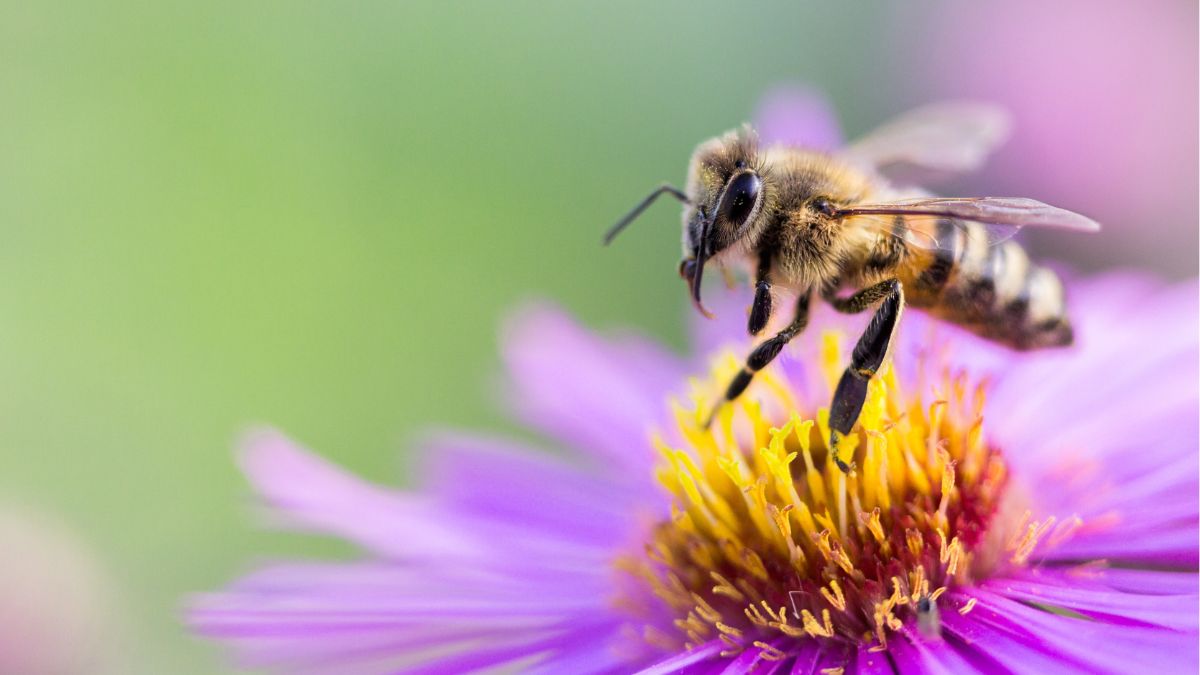
To protect bees and other pollinators from pesticides and herbicides, you should consider using alternative methods of pest control and weed management that are safe for bees. Some examples of these methods are:
- Vinegar: You can use vinegar as a natural herbicide to kill weeds without harming bees. Vinegar is acidic and can burn the leaves of plants. You can spray vinegar directly on the weeds you want to get rid of, but be careful not to spray it on your desired plants or soil.
- Epsom salt: You can use Epsom salt as a natural pesticide to deter pests without harming bees. Epsom salt is a mineral compound that contains magnesium and sulfur. You can sprinkle Epsom salt around your plants, dissolve it in water, and spray it on your plants that attract bees. Epsom salt can also help your plants grow healthier and stronger.
- Chrysanthemum: You can use chrysanthemum as a natural insecticide to kill insects without harming bees. Chrysanthemum contains a compound called pyrethrin, which affects the nervous system of insects. You can make chrysanthemum tea by boiling the flowers in water and straining the liquid. You can spray the tea on your plants or soak cotton balls in it and place them around your garden.
- Pepper, garlic, and onion: You can use pepper, garlic, and onion as natural repellents to keep pests away without harming bees. Pepper, garlic, and onion contain strong odors and flavors that pests dislike. You can make a spray by blending these ingredients with water and straining the liquid. You can spray the liquid on your plants or around your garden.
- Castile soap: You can use castile soap as a natural detergent to wash away pests without harming bees. Castile soap is a vegetable-based soap that is biodegradable and gentle on plants. You can make a soap solution by mixing castile soap with water. You can spray the solution on your plants or use a cloth to wipe them.
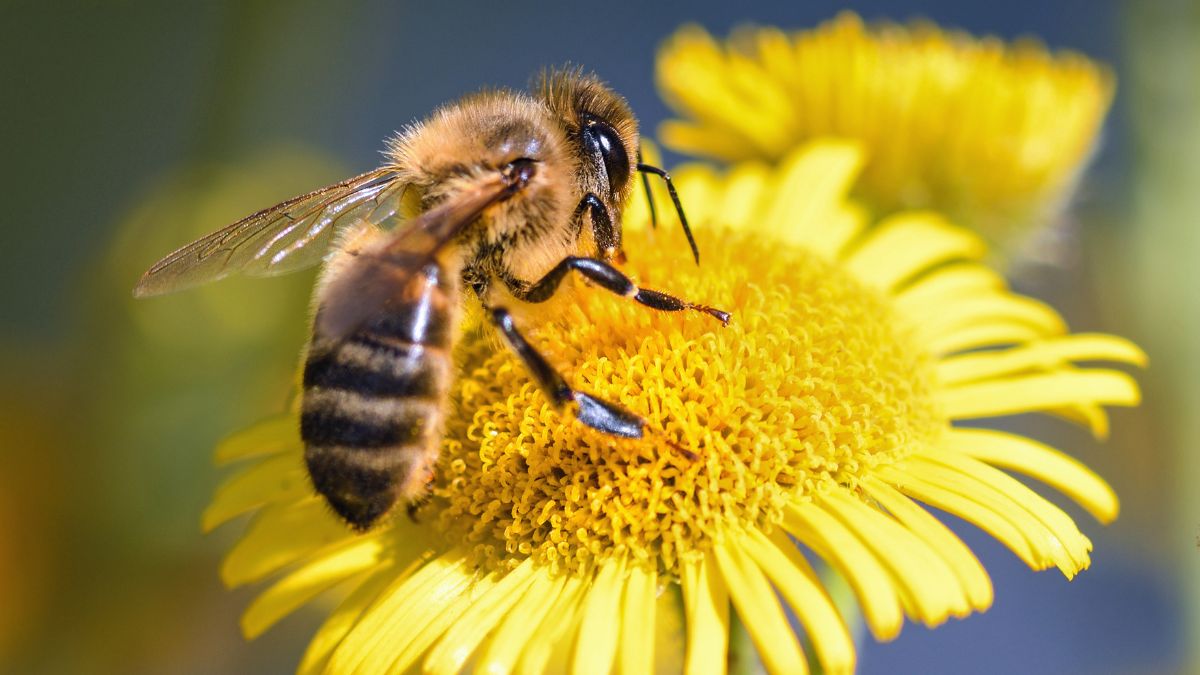
When choosing organic or natural products and practices for your garden, you should always read the labels carefully and follow the instructions. You should also test a small area of your plants before applying any product to make sure they are not sensitive or allergic to it. You should also avoid spraying any product during the day when bees are most active and choose products that are short-lived and do not persist in the environment.
Conclusion
In conclusion, attracting bees to your garden is a rewarding and beneficial activity that you can easily do with some simple and effective tips. By growing a variety of flowers rich in pollen and nectar, providing bee habitats and nesting sites, and avoiding pesticides and herbicides, you can create a bee-friendly garden that will help not only the bees but also your plants and the environment.
Remember, bees are essential for pollination and biodiversity, and they need our support and protection. You don’t need a large or fancy garden to make a difference. All you need is some love and care for these buzzing beauties.
As Albert Einstein once said, “If the bee disappeared off the face of the Earth, man would only have four years left to live.”
Let’s not let that happen. Let’s make our gardens a haven for bees and a source of joy for ourselves.
FAQ
What are the best flowers to attract bees to my garden?
There is no definitive answer to this question, as different types of bees may prefer different types of flowers. However, some general guidelines are to choose flowers that are native to your region, that bloom at different times of the year, and that have blue or purple colors. Some examples of bee-friendly flowers are lavender, sunflower, poppy, aster, and heather.
How can I provide bee habitats and nesting sites in my garden?
Bees need places to nest and hibernate, and these places vary depending on the species of bee. Some bees nest in the ground, some in hollow stems or holes in wood, and some in cavities or crevices. You can provide bee habitats and nesting sites by leaving some areas of your garden undisturbed and wild, by creating or buying bee houses or hotels, by planting shrubs or trees with hollow branches, or by drilling holes in logs or blocks of wood.
Are there any risks or drawbacks of attracting bees to my garden?
Bees are generally harmless and beneficial for your garden, as they pollinate your plants and help them produce fruits and seeds. However, some people may be allergic to bee stings or afraid of bees. If you are one of them, you should take some precautions when attracting bees to your garden, such as wearing protective clothing, avoiding wearing bright colors or strong perfumes, and keeping a safe distance from the bees. You should also avoid disturbing the bees or their nests and seek medical attention if you get stung.
Does lavender attract bees?
Yes, lavender does attract bees. Lavender is one of the best flowers for attracting bees because it has the ideal shape, color, scent, size, and nectar production for bees. Bees are generally attracted to yellow, blue or purple flowers, and lavender fits this criterion. Lavender is more popular among bumblebees than honey bees because bumblebees have longer tongues that can reach the nectar more easily. However, honey bees and other types of bees also visit lavender flowers. Lavender is a native plant to the Mediterranean region, but it can grow well in other climates and soils as well. Lavender is also beneficial for gardeners because it repels pests, smells good and looks beautiful.
